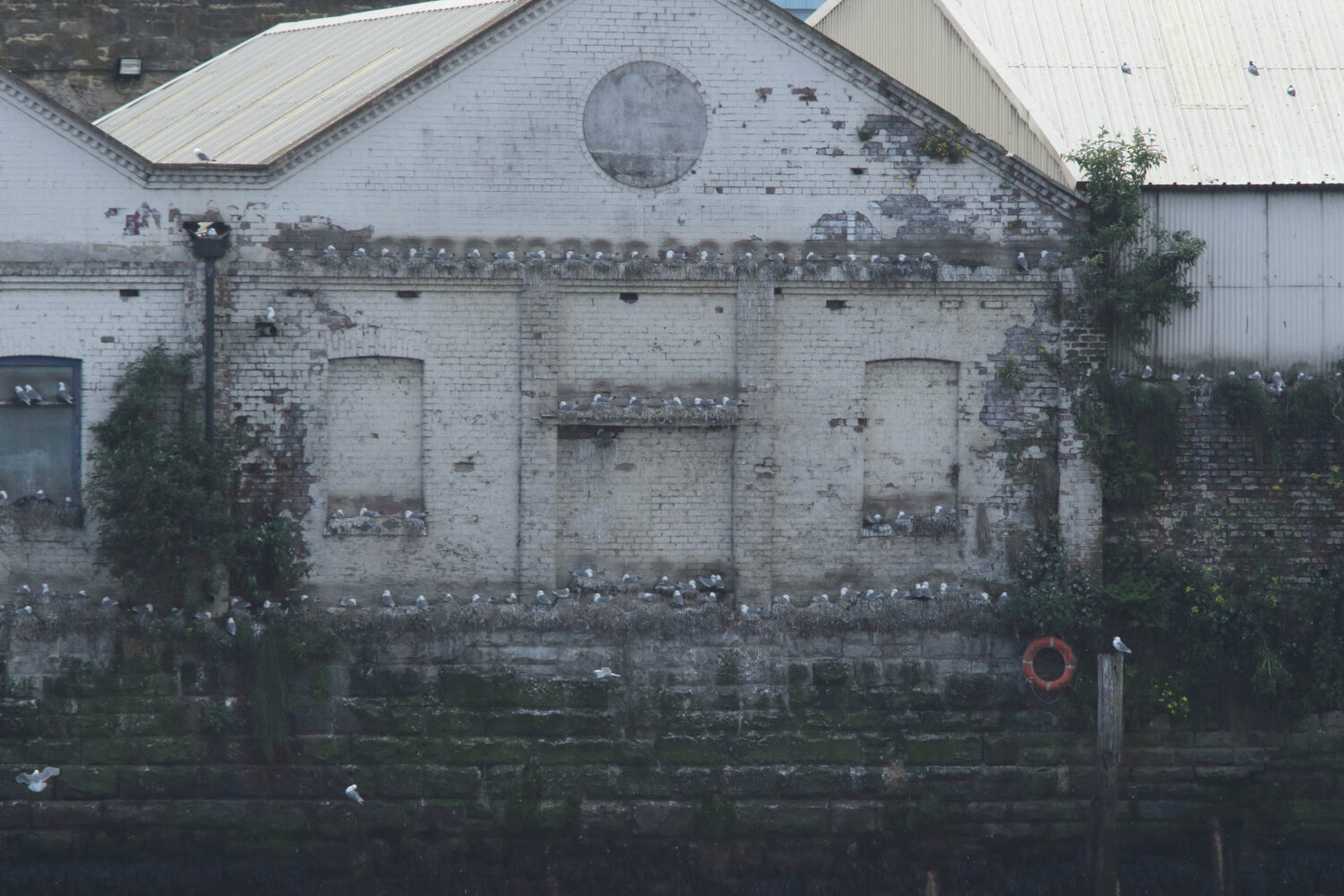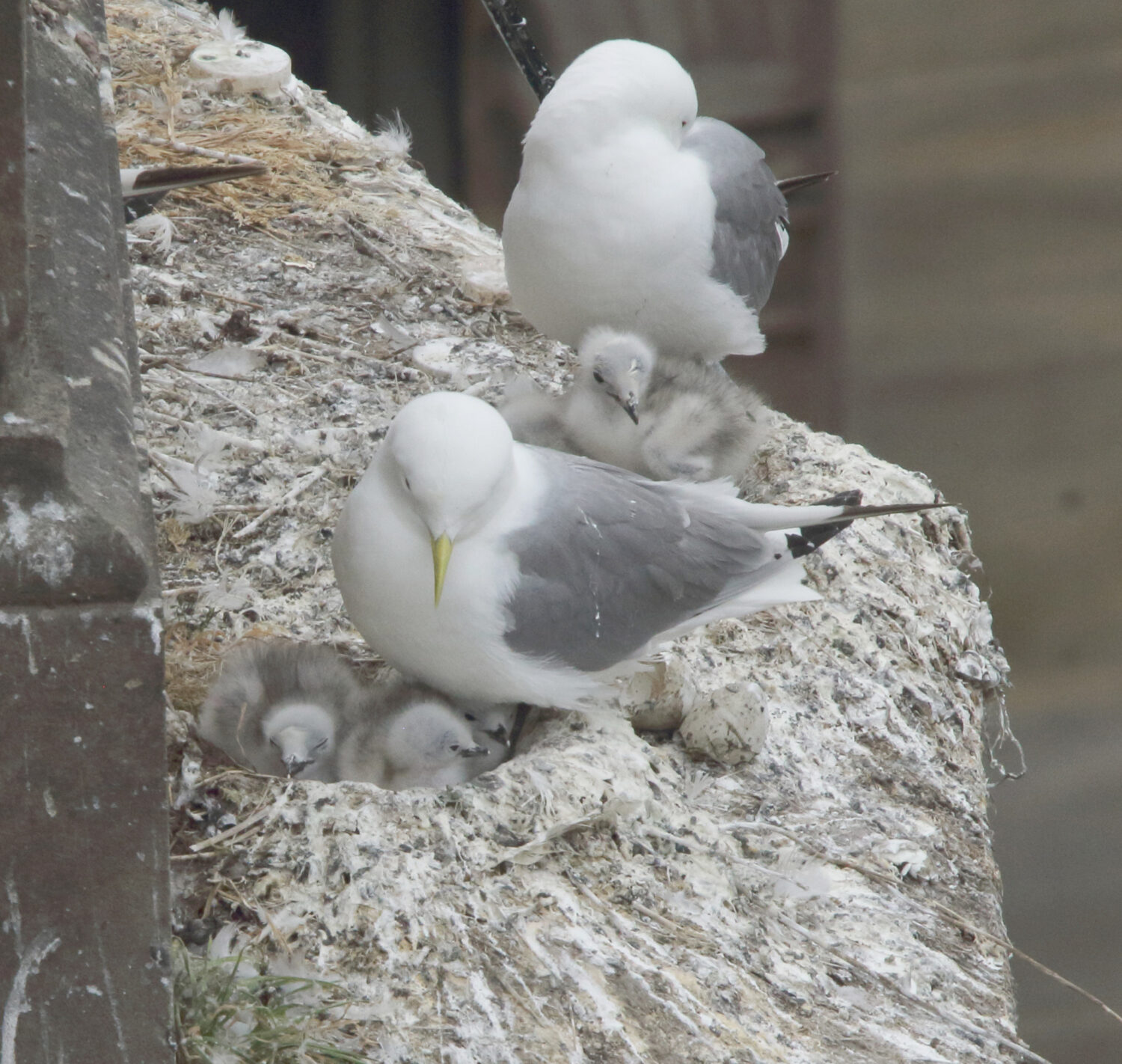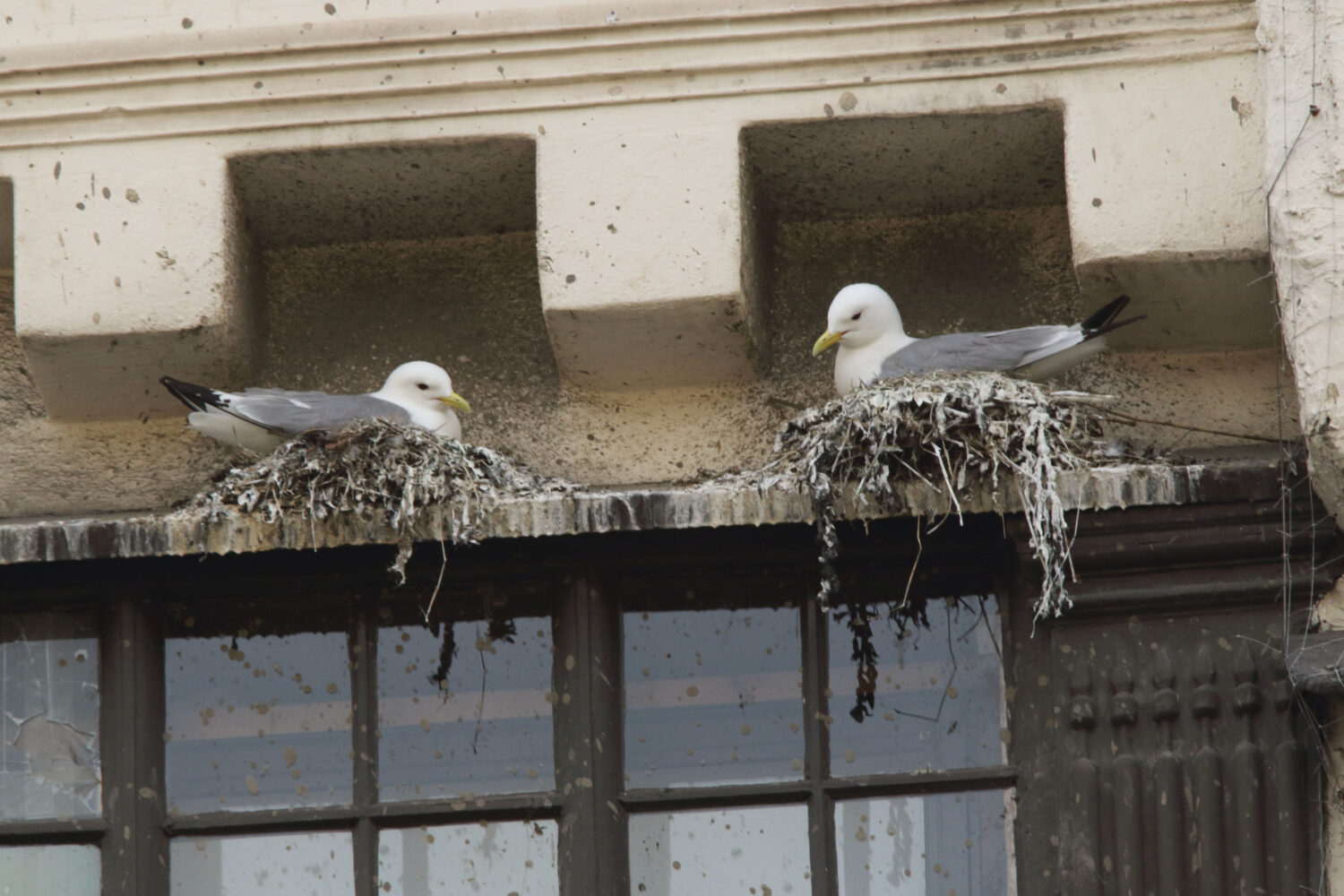In this new blog, Dan Turner provides an update on how the Kittiwakes are faring on the Tyne.
It is always great to get the Tyne kittiwake nesting surveys underway each year, though starting the season could be quite daunting since numbers of nesting pairs has increased so much over the years. My first round of river nest surveys ran from 25 May to 3 June during which my main aim was to record apparently occupied nests (AON), following their standard definition. I would also record numbers of incomplete ‘trace’ nests, numbers of adults and presence of first-year kittiwakes aged now at one year old. At Akzo Nobel (a.k.a. International Paints) I ‘broke my duck’ on a dry day during low tide. My telescope was essential for these surveys, particularly here due to the distance from which I needed to observe. As I worked, the numbers built until I reached 227 AON and 23 trace nests plus 380 adults. On a roughly similar date in 2022 (19 May) the equivalent figures were 213 / 32 / 450. These numbers balanced quite nicely bearing in mind my 2023 Round One survey at Akzo Nobel was performed six days later than in 2022. Once my full Round One surveys of all the river sites were complete I was surprised to see a 6.3% increase in AON compared to last year. Therefore when my 2023 Round Two nest surveys were completed during 10-17 June (in the main), I was a little disappointed when the final total of AON (2,002) for 2023 was below that of 2022 (a minimum of 2,030). It did not seem right to complain however, since for a second year we had more than 2,000 pairs of kittiwakes nesting along the river. Quite a result! Dr Kathy Evans was unavailable to assist me this year in making additional observations at Akzo Nobel, where she has helped since 2015.

During my Round One and Round Two full river nest surveys it was great to see early nestlings appearing and I was very pleased to record the first nestling this year on 27 May at the Tyne Bridge south abutment. This was five days earlier than in recent years.
As my main Tyne kittiwake nestling surveys began this season on 7 July, running until 15 July, it quickly became apparent that all was far from well. Breeding productivity was not what it ought to be, there were fewer live nestlings and more dead ones than expected. It seemed that after a good start to the season, with many nests built and attended, avian influenza may have moved in and was taking a toll, particularly on the youngsters. I received comments from a number of people that they were seeing more Tyne urban casualties this year than usual, and this was indeed also my own experience in the first half of July. The weather had not been so bad as to explain this many chick deaths. I was aware of many black-headed gull deaths earlier in the season in the UK and reports of an impact at some kittiwake sites further to the north of the Tyne and mortality building in terns. These cases had been attributed to HPAI (Highly Pathogenic Avian Influenza), though I am not aware how many specimens had been tested. At Newcastle and Gateshead I collected (during 9-15 July) three kittiwake nestling corpses for HPAI testing.
As the results came in from my nestling surveys, each day there was a reduction in overall breeding success, generally by 1% per day, ending with minimum of 0.69 chicks raised to fledging per nest (aon) by 15 July. Should further such daily surveys have continued then the results may have continued to diminish, but would then become blurred due to increasing numbers of kittiwakes fledging. Since 1994 in the thirty years I have been performing these annual surveys along the Tyne, the only year with a lower productivity was 2008 while one other year came quite close. Nevertheless if the Tyne can raise more than one thousand chicks to fledging this year that has got to be good news. It is fantastic to see the young birds developing. There are regular ups and downs along the way, but the overall trend on the Tyne has brought an increasing population since 1994.

In relation to the work of the Tyne Kittiwake Partnership (TKP), I was aware and involved in such issues as:
- Particular concern by Historic England at Bessie Surtees House, Sandhill, Newcastle Quayside, where nest (aon) numbers had increased from 6 in 2020 to 23-24 this season and last.
- Development of plans at Akzo Nobel (Felling Shore) to encourage the movement of around fifty nesting pairs onto nearby mitigation nesting ledges, due to conflict on site.
- Ongoing involvement in discussions with Newcastle City Council in relation to the Major Maintenance Works planned for the Tyne Bridge. The TKP has been involved in such discussions for a number of years. The Works are scheduled to begin in September 2023
